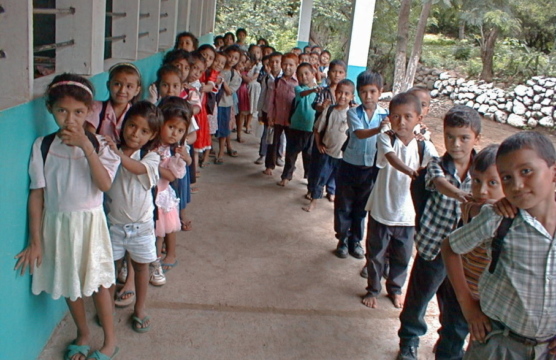
Measuring Up?
In 2009, some countries in Latin America and the Caribbean improved their PISA performance, but all ranked in the bottom third in all subjects tested.
Recent research suggests that teachers are the most important factor in improving student learning. Great teachers increase student learning much more than do poor teachers, and the effects appear to be cumulative over time. A child with a highly effective teacher can learn up to three times as much in a school year as the same child with an ineffective teacher. Great teachers make a huge difference in the success of their students.
At the same time, most research suggests that many factors traditionally thought to improve teacher performance in fact do little to predict success. These include years of education, a graduate degree, superior intelligence, an extroverted personality, enthusiasm, experience, professional certification, in-service training, and class size. Although these factors have often been used to recruit, remunerate, and promote teachers, there is very little evidence that they do a good job of distinguishing between effective and ineffective teachers.
A key question, then, is what makes a great teacher? What do great teachers do? Is great teaching purely instinctive, or can it be taught? What can we do to make sure that students have the best teachers possible?
In his book, Teach Like a Champion, Doug Lemov attempts to answer these questions. He argues that great teaching is an art. Like all art, it relies on a set of skills or techniques that, once mastered and applied, transform raw material into highly valued results.
Using demographic information and test score results from across the United States, he identified a small group of teachers who managed to significantly increase the test scores of the poorest students. He then spent years observing these outstanding teachers, recording their work and cataloguing their classroom practices. This book is the result. It is about “the tools of the teaching craft,” and more specifically about the tools necessary to succeed in teaching public school students who are poor and least likely to do well in school. It focuses on the difference between teachers who are great and those who are merely good. It includes techniques as simple and mundane as how great teachers greet students, pass out papers, and decide whom to call on to answer questions. The book shows what outstanding teachers routinely do to “close the achievement gap between rich and poor, transform students at risk of failure into achievers and believers, and rewrite the equation of opportunity.”
In 2009, some countries in Latin America and the Caribbean improved their PISA performance, but all ranked in the bottom third in all subjects tested.
Low-skilled teachers need specific guidance to reach minimally acceptable levels of instruction.
En el marco del desarrollo de informes nacionales sobre progreso educativo que está promoviendo PREAL con varios países de América Latina para la publicación bianual de informes regionales sobre este tema, se difunden aquí algunos de los aspectos principales extractados del informe de Honduras Descargue el documento completo abajo

